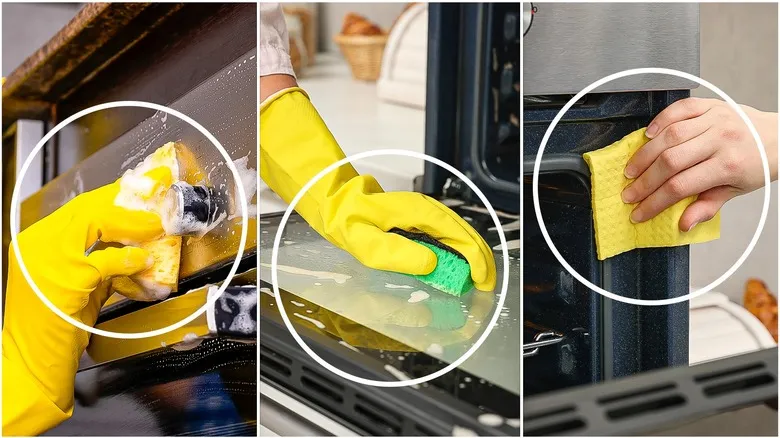Under and behind the oven
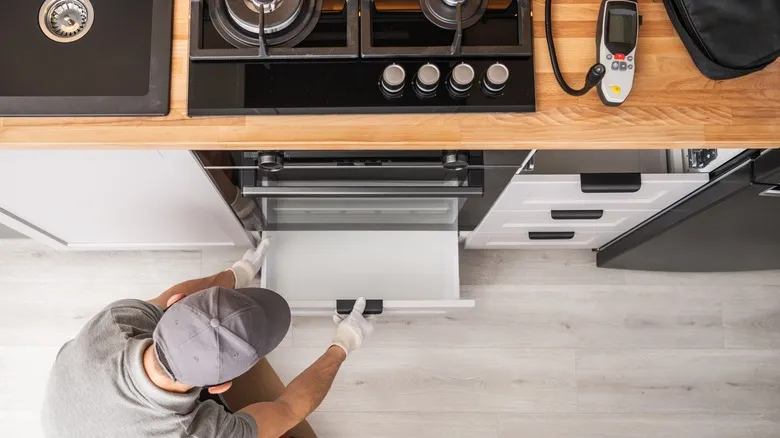
If you've ever been in the kitchen preparing a meal and accidentally dropped something like a frozen pea, only to lose it forever, it might be lurking beneath your oven. The area under the oven often collects food scraps that can attract pests and create unpleasant odors, regardless of how thoroughly you clean the rest of the kitchen. To clean this space, you'll typically need to sweep or vacuum, just as you would with the rest of the kitchen floor.
Gaining access to this area may seem daunting if you've never attempted it before, but there are two methods you can try. One option is to carefully pull the oven away from the wall and clean what you can reach. Alternatively, if your oven model has a bottom drawer, you can pull it out to reveal the entire floor area. In some cases, instead of a drawer, the oven may feature a detachable front panel that opens up to expose the space underneath.
That weird drawer at the bottom
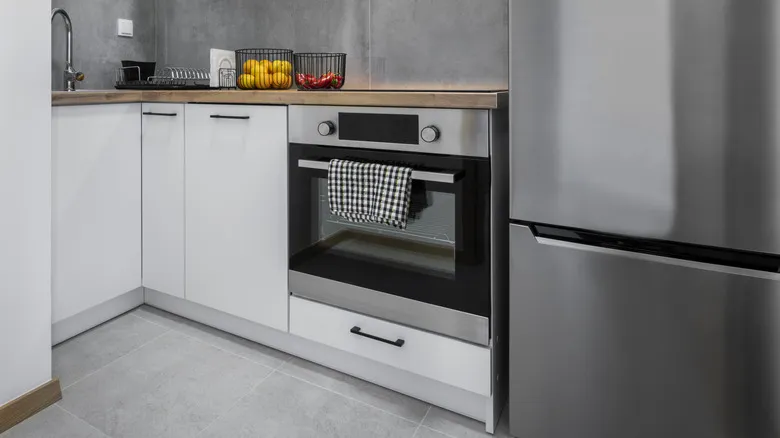
Regarding the drawer located at the bottom of the oven... It seems that no one outside of the manufacturers can determine its true purpose—whether it's for storage, warming food, or something else entirely. This confusion is understandable, as the function of the drawer can differ based on the type of fuel, the oven's design, and the manufacturer. In some instances, that drawer even houses the broiler. Homeowners who purchased their oven can refer to the manual that came with it, while renters might look for the oven's manual online or consult their landlord or maintenance staff. Regardless of its intended use, it's important to keep the drawer clean.
Every few months, take the drawer out and wipe down the interior surfaces. If the drawer serves as a warming drawer or broiler that you frequently use, clean it more often. Be sure to remove any cleaning solution residue before using the drawer again.
Between the glass panes in the door
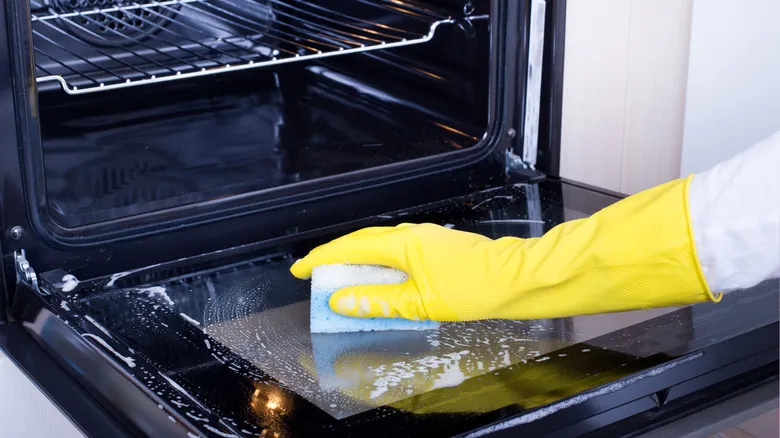
A clean glass pane in an oven door looks significantly better, and it's quite simple to wipe down both sides. However, many people are unaware that numerous ovens feature two layers of glass, allowing grease to accumulate between them.
To thoroughly clean the glass panes, begin by applying a gentle, non-abrasive cleaner to both the inside and outside surfaces. Then, remove the oven door. There should be openings at the bottom that allow you to reach the glass with a thin object, such as a stick or wire, to which you can attach a cloth. After applying a small amount of cleaning solution to the cloth, carefully insert it through the gaps into the door. Wipe the glass gently, and then repeat the process using cloths dampened only with water, followed by dry cloths to ensure all cleaning solution is completely removed.
The sides of the oven
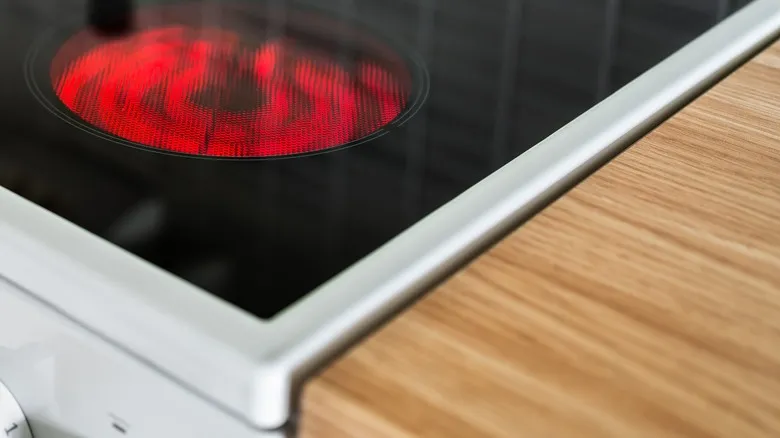
Regardless of whether your oven is nestled between two counters or positioned in an open space, it's important to take care of its sides. Food can drip into the crevice between the oven and the counter, leaving streaks that may develop unpleasant odors or attract dirt.
Cleaning the grime on the sides is straightforward if they are easily accessible. Simply use your preferred mild cleaner and wipe the area with a paper towel or soft cloth. However, for sides that are typically obstructed by base cabinets or other appliances like the refrigerator, you will need to pull the oven out to clean them properly. If you’re renting, it’s advisable to consult your landlord or building manager before attempting this. Alternatively, you can use a thin broom or a yardstick wrapped in a cloth (with cleaner sprayed on it) to quickly clean the sides by reaching into the gap.
To prevent the sides of your oven from getting dirty in the first place, consider investing in silicone gap covers to seal the space between the oven and the counter. Just be cautious not to completely block the gap, as this could interfere with the oven's heat dissipation and ventilation; appliances that generate heat require adequate clearance.
The temperature knobs
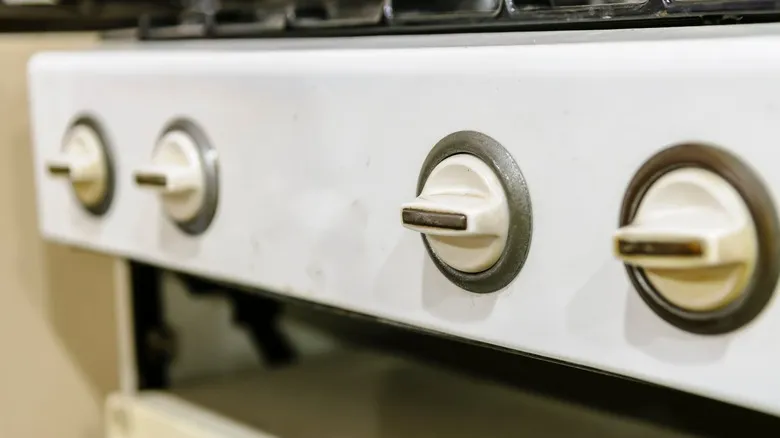
The knobs used to adjust the temperatures of your stove and oven require cleaning, even if they seem to be shielded from any food splatters. In reality, those splatters can reach everywhere, and if grease accumulates on the knobs, it will attract dirt.
When cleaning the knobs, avoid spraying cleaning solution directly onto them. The liquid can seep behind the knobs, potentially damaging the control panel. Instead, apply the cleaner to a cloth or paper towel. You can either spray the cleaner onto the cloth or dip the cloth into the solution before wiping down the knobs.
If the knobs are removable — many models allow you to pull them off and reattach them — take them off and carefully clean the area behind them. Soak the knobs in a mixture of vinegar and water, and make sure to dry them thoroughly before putting them back. Additionally, be cautious not to use harsh cleaners on printed markings, such as temperature indicators, as they can easily wear off.
Stovetop grates (if the oven has a gas range)
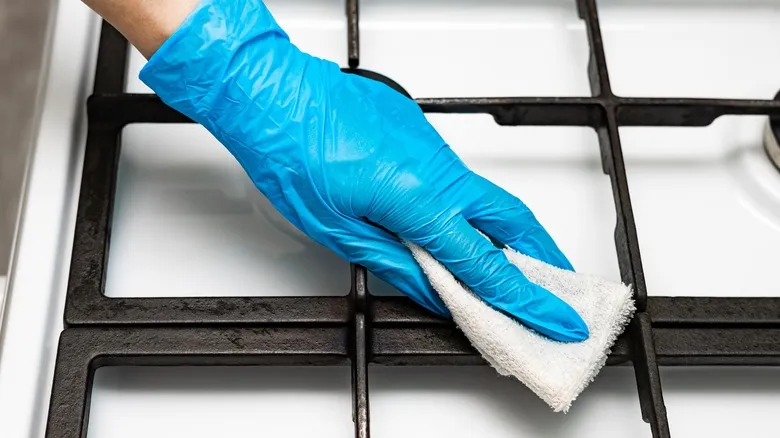
One area that people frequently overlook when cleaning is the grates above a gas burner. Food drips and splatters can accumulate on them, making them appear unappealing. While you don't need to deep-clean stove grates every week, you can typically wipe away fresh spills with a damp paper towel and a bit of dish soap or baking soda. However, if the grates are neglected for an extended period, the buildup can become quite stubborn, giving your stove and oven a neglected look.
Cleaning the grates is not overly complicated; it just requires some time and effort. There's no need to resort to ammonia, which was once a common cleaning agent for cast iron grates. Enameled grates can be effectively cleaned using a baking soda paste combined with grease-fighting dish soap, hot water, and a stiff-bristled brush. Avoid using baking soda paste on non-enameled grates.
Make sure the grates are cool before you start cleaning, and dry them with paper towels or a microfiber cloth. If there is stubborn debris that won't budge, you might consider using an oven cleaner. Just be sure to thoroughly rinse away all residue with hot water and dish soap afterward.
The range hood and filter

If you have a combination oven and stove, it's likely that you also have a range hood equipped with a filter. In some older buildings, stoves may lack this feature, as ventilation often relies on an exhaust fan in the wall or an open duct leading to the roof. Additionally, many stoves and ovens have microwaves positioned above them instead. However, if you do have a range hood, it's important to clean it regularly to eliminate the grease that accumulates over time. This grease can attract dirt and dust, leading to an unsightly appearance and unpleasant odors.
To clean the exterior, a degreasing cleaner and a soft cloth or paper towel are usually sufficient. For the filter, simply soak it in hot, soapy water, then scrub it with a soft brush, rinse, and dry. If the grease buildup is particularly severe, you can use the oven cleaner method recommended for stove grates.
What about using paper filters in addition to the regular filter? Disposable filters can be purchased to sit alongside the mesh filter, typically secured with clips. These filters are designed to capture most of the grease and dirt, potentially reducing the frequency of cleaning the actual filter. However, while they can be beneficial to some degree, they may also impede airflow to the main filter and vent, so it's advisable to use them cautiously.
Oven heating elements and gas burners
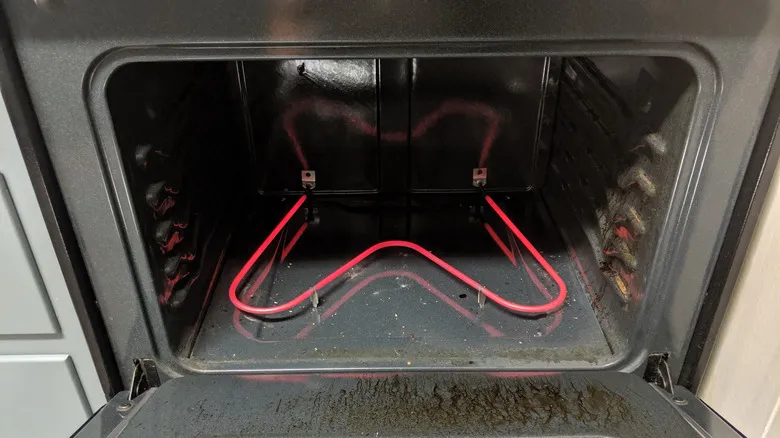
If you’ve never thought about cleaning the heating elements and broiler of your oven, that’s perfectly okay. Typically, you don’t need to clean them since the heat from cooking tends to burn away most dust and grime. Usually, you just need to lift the hinged electric elements (if your oven has them) to access the oven floor for cleaning.
However, it’s crucial to clean the elements and burners when food spills or cleaning solutions get on them. Many cleaning products are flammable, and even those that aren’t can leave a foul odor on any food you bake. If you accidentally spill or spray a cleaning solution on a heating element, be sure to wipe it down carefully with a damp paper towel, and avoid using the oven until all residue has been completely removed.
Recommended

12 Crucial Storage Tips For Your Good Whiskey
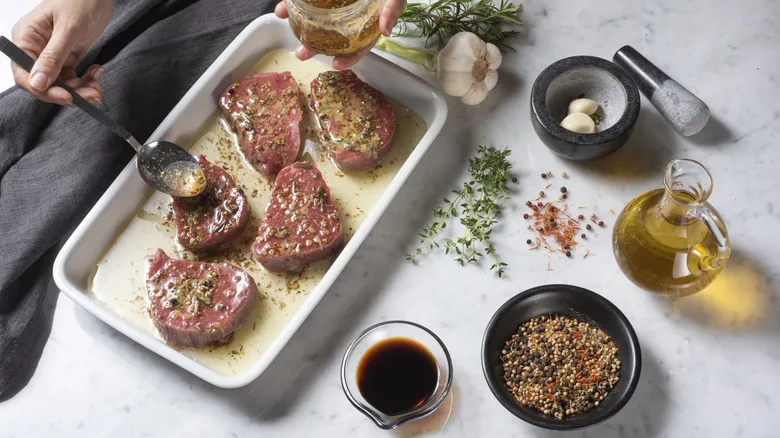
For A Perfect Steak Marinade Every Time, You Need 4 Components
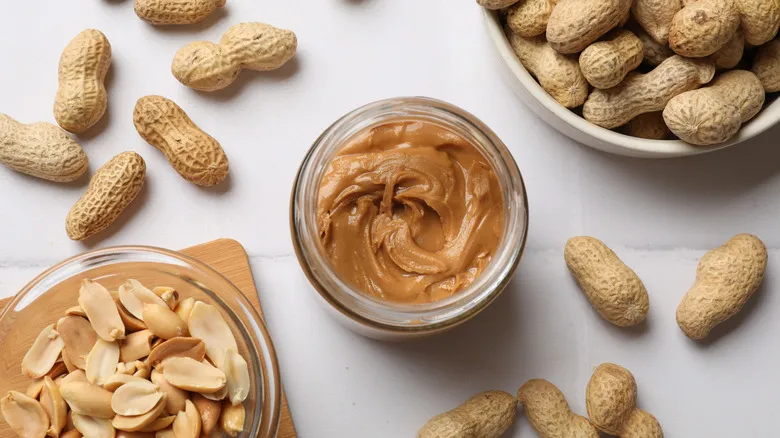
Is Natural Peanut Butter Considered Processed Food?
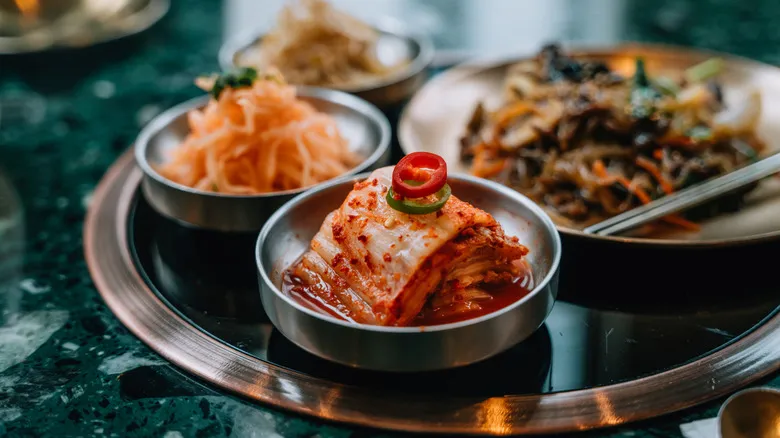
The Underrated Kimchi Varieties You Need To Try According To An Expert
Next up

